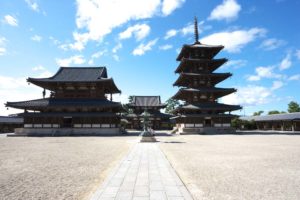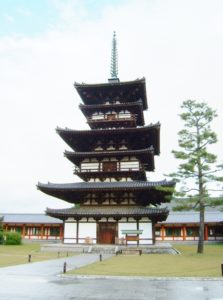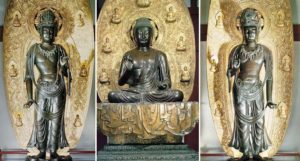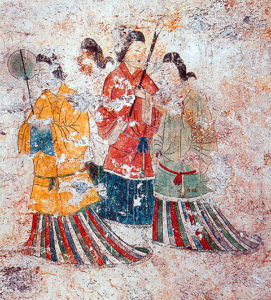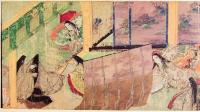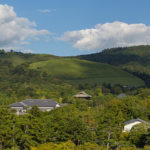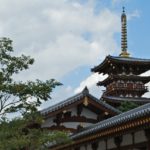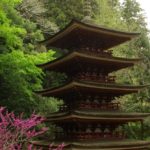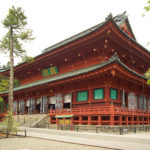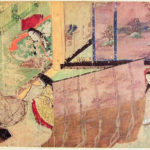Table of Contents
What’s Asuka Period?
The term of ancient Asuka Period began in 592 and ended in 710. “Asuka” is the southern area of Nara Prefecture.
In this period, Buddhism was the most essencial things of the culture. With Buddha statue, the religion had already came to Japan in the middle of 6th. And the two powerful family, Soga clan(蘇我氏) and Mononobe clan(物部氏) fought with each other whether accepting it or not.
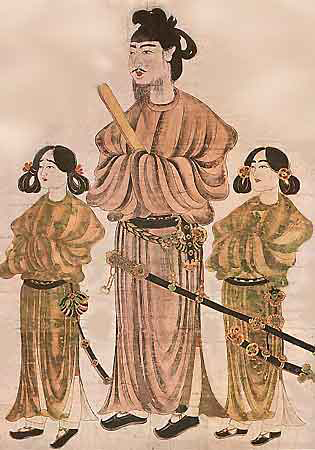
Shotoku Taishi
Shotoku Taishi(聖徳太子) and Soga clan supported Buddhism and Mononobe clan was opposed to. In 587, when Shotoku Taishi was therteen years old, he and Soga clan beat Mononobe clan. It directed Japan as the Buddhist country at Asuka region .
From the view point of the feature, the culture of Asuka Period is divided into Asuka Culture(飛鳥文化) and Hakuho Culture(白鳳文化). And both of them really showed the characteristic of buddha art.
Asuka Culture
Asuka Culture was very local culture of the region. Because the culture was deeply affected by the people who came from Korean Peninsula and settled down in the capital. They introduced not only the culture of Korean Peninsula, but also of China in the Period of North and South Dynasties, India, West Asia, and Greece.
Temples
In 596, Soga-no Umako(蘇我馬子) started to build the first temple, Hokoji Temple/Asuka-dera( 法興寺/飛鳥寺) in Japan. Japanese didn’t know a tile-roofing and a cornerstone until the moment.(learn about the Japanese temples)
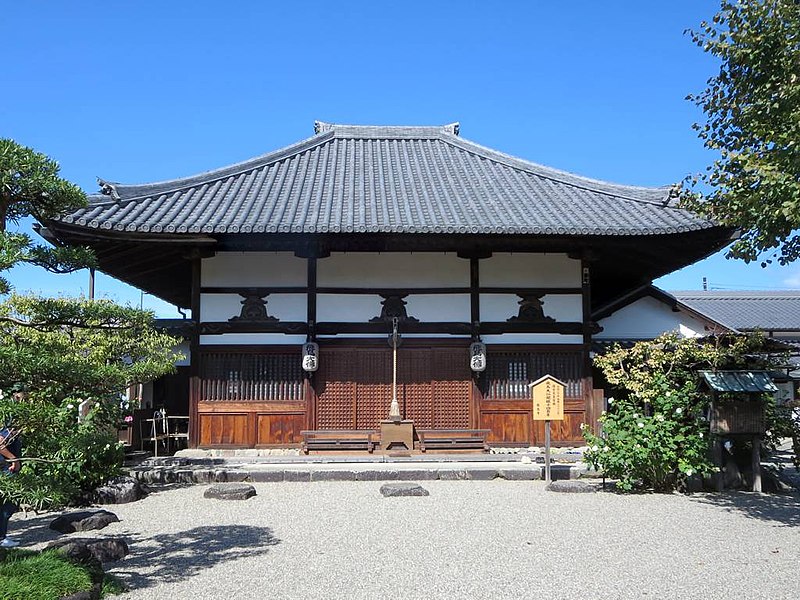
Main hall of Asuka-dera, rebuild in Edo Period
The great statue of Buddha at Asuka-dera is older than any other Buddha statues in Japan.
It was said that Shotoku Taishi hope the plan and Horyuji Temple(法隆寺) was founded in 607. Saiin garan of Horyuji is the oldest wooden structure be in existence in the world. Shitennoji Temple is also seen as the plan of Shotoku Taishi.
Saiin garan, Horyuji Temple
When you walk through the Kairo(corridor) of Horyuji Temple, you can see the influence from the ancient Greece. The pillars of Horyuji Temple shape swollen at the middle. It is thought of as “entasis” which is seen in Parthenon.
Buddha statues
You can feel the atmosphere of the ancient Greece at the Buddha statues of Asuka Period. They show very faint smiles at the corner of their mouths including Shaka Nyorai at Asuka-dera, Kudara Kannonzo at Horyuji, and Miroku Bosatsu at Chuguji and Koryuji.
It is called “archaic smile” and one of the features of the ancient Greece sculptures.(learning about Buddha statue in Japan) And the Agency for Cultural Affairs esignated Kudara Kannonzo as a first national treasure in Japan.
Paintings
Most of the paintings and craft arts of the Asuka Culture also are based on Buddhism. “Tamamushi-no zushi”(玉虫厨子), The Jewel Beetle small Shrine, one of is the masterpiece of the culture. The main Buddha statue in the Tamamushi-no zushi and its gorgeousness was lost through the years.
But the lacquered door and the pictures were still well remained. The pictures have depicted the world of Buddhism. “Shasinsiko-zu”(捨身飼虎図) was the scene that Buddha’s previous life throws himself from the cliff and become the feed for the hunger family of tigers.
Hakuho Culture
The terms of Hakuho Culture was from Taika Reform in 645, to the relocation of the capital to Heijokyo in 710(start of Nara Period). At that time, Japan just followed the political system of , as well as the culture of, Tang dynasty of China. The air of the Hakuho Culture is “generosity”.
temple
The government had aggressively founded many temples in the term. But the three-storied pagoda of Yakusjiji Temple is the only remaining structure in Hakuho Period.
The three storied- pagoda,Yakushiji
With the three eaves, it may be seen as the six-storied pagoda. An American scholar of Eastern art, Ernest Francisco Fenollosa praised the beauty as “frozen music”.
Budda statue
The Buddha statues of the Hakuho Culture are plumper and natural, without archaic smiles. Yakushi Nyorai(薬師如来), Nikko Bosatsu(日光菩薩) and Gakko Bosatsu(月光菩薩) at Yakushiji Temple show the dynamic shapes.
Yakushi sanzon-zo
Also, Yume-chigai-Kannon-zo(夢違観音像) at Horyuji Temple and Buddha’s head at Kofukuji Temple are famous.
Paintings
The peak period of constructing the “Kofun”(古墳), tumuluses, for the people in power was already passed. The Takamatsuzuka Kofun(高松塚古墳) was built in the end of its history.
In 1972, Kashihara Archaeological Research Institute investigated the inside. What they looked in the burial chamber were the colored wall paintings. That depicted the people and the four orientation god(Suzaku, Genbu, Seiryu, and Byakko).
“The group of girls”, Takamatsuzuka Kofun
Speaking of a wall painting, the Kondo(golden hall) of Horyuji hold popular one. It is the picture of the Buddhism in detail. But the fire took place at the Kondo in 1949, and the part of the painting was lost.
Poetry
In Hakuho Culture, the Emperors and the nobles composed Chinese poetry(漢詩) and Waka(和歌).
Otomo-no Oji(大友皇子) and Otsu-no Miko(大津皇子) are famous for Chinese poetry. On the other hand, Emperor Tenji(天智天皇), Emperor Tenmu(天武天皇), Nukata-no Ookimi(額田王), and Kakinomoto-no Hitomaro(柿本人麻呂) are known as one of the predominant poets.

